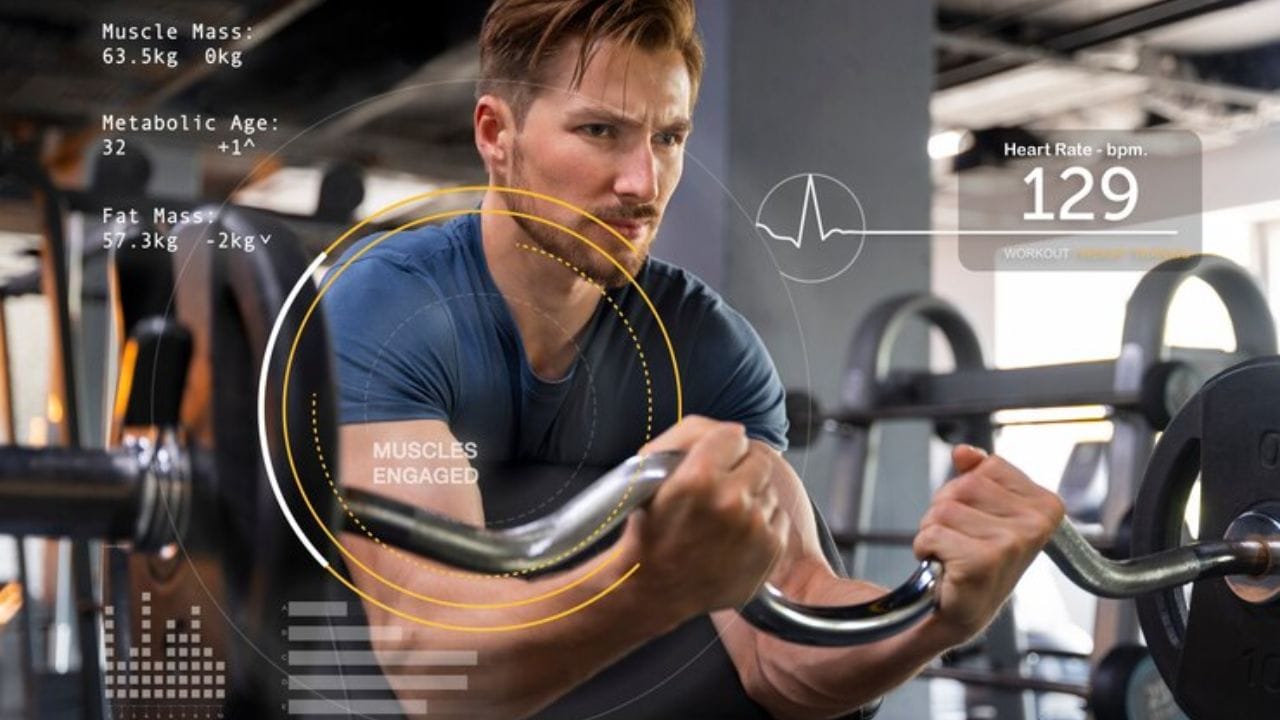- The Movement
- Posts
- My health predictions for 2025.
My health predictions for 2025.
A few thoughts on trends and innovation I expect to see in the health space this year.
Hi there, and welcome to my newsletter.
My name’s Ryan, and I specialize in helping people be active and thrive in and out of the gym. This newsletter is about challenging the status quo of healthcare and fitness and summarizes what I’m learning, thinking, and teaching.
Thanks for reading and being a part of The Movement.
Here’s what we got this week.
It’s only a few weeks into 2025, but significant shifts are already underway in the health and wellness space, driven by the return of the Trump administration.
The FDA has announced a ban on Red No. 3, a petroleum-based food dye found in approximately 3,000 products, including baked goods, candy, and sugary drinks. Companies have until 2027 to reformulate their products.

Why now? Red No. 3, identified as a carcinogen in animal studies, was banned in cosmetics back in 1990. However, while countries like those in the EU eliminated it from foods decades ago, the U.S. continued its use in the food industry. With other additives like Red 40 still permitted, there’s mounting pressure for broader reform.
New leadership, new priorities.
Incoming HHS Secretary Robert F. Kennedy Jr. has pledged to overhaul the nation’s approach to health and wellness. Known for his controversial but bold views, Kennedy’s “MAHA” movement (Make America Healthy Again) focuses on clean food, exercise, and reducing environmental and dietary toxins.
He’s also a vocal supporter of alternative therapies, including psychedelics, peptides, and stem cells—highlighting his push for health innovations outside the pharmaceutical industry’s reach.
Reforming the food system.
Kennedy aims to tackle ultra-processed foods (UPFs), improve school nutrition, and revamp farm subsidies to prioritize healthier food production. He’s also pledged to phase out harmful chemical additives and fluoride in public water supplies—actions that have sparked both cautious optimism among wellness advocates and concern from traditional medical organizations.

America is in the midst of a food crisis, with UPFs contributing to an estimated one million diet-related deaths annually. Poor diet, excess weight, and inactivity are linked to 45% of cancer deaths in the U.S. Despite the staggering statistics, regulatory gaps like the Generally Recognized as Safe (GRAS) framework have allowed companies to self-certify ingredients—leaving additives like Red 3, aspartame, and trans fats largely unchecked.
What’s next?
As the year unfolds, we can expect increased debate over these policies and the involvement of wellness advocates like Mark Hyman in shaping reform. With Big Food under scrutiny and a growing demand for accountability, 2025 might be the year health policy sees real transformation.
Here are some business and tech predictions for how these shifts could impact the wellness and health industry.
1. The longevity niche will boom.

Thank you, Brian Johnson and Peter Attia.
Longevity wasn’t a word you heard a lot until a couple of years ago. Now, it’s commonplace thanks to these guys.
Everyone seems to talking about ways to live longer and optimize their health. But that doesn’t necessarily just mean through supplements or exercise.
Wellness brands are leveraging the power of community with in-person experiences and travel.
AI-driven health tech is tackling the root causes of chronic disease, catching the attention of insurers (which means big money).
Speaking of money, concierge primary care models like Forward and Parsley Health are redefining healthcare and focusing on bringing preventative healthcare to the patient in their homes. As a results, investors are opening up their wallets and jumping on the longevity freight train.
People don't just want to survive, they want to thrive. The impact of the longevity brand is growing already and I expect more of the same to continue this year.
2. Recovery will be fully integrated into gyms.

2024 was the year of cold tubs and saunas.
It seemed like everyone was jumping into a bucket of ice and posting it on social media. While the evidence is a bit mixed to say the least, I expect the recovery trend to continue and find its way into more and more gyms.
Even CrossFit gyms, more known for their industrial warehouse spaces than they are their progressive recovery practices, now have cold tubs and saunas.
Next up: contrast therapy, Therabody massages, guided breathwork, and red light therapy.
Consumers will ask, "How can I get more out of what I’m already doing?" and pay for it.
People now realize that recovery isn't just rest days. It's about using every session to prime the body for healing and growth. This shift will push innovation in pre- and post-workout solutions designed to optimize performance and recovery in real time.
The added status of telling people you pay $30,000 a year for a gym membership doesn’t hurt either.
3. "Customized programming" gets hyper-personalized.

People want results, delivered quicker and more reliably.
Coaches want to be able to provide that more efficiently.
Startups are starting to use AI to analyze form, data supported fueling schedules, health metrics, annualized performance trends, and more.
In my own coaching, I’m exploring ways to integrate lifestyle factors including stress, diet, sleep, mood, recovery, etc. into the daily programming, ensuring the workout is exactly what the body needs on that given day.
The focus will be on removing the guess work and decision-making wherever possible.
The result? Less stress on coaches and providers. Better outcomes for athletes.
Personalization will extend beyond training plans, evolving into solutions that adapt to how your body responds (during and after exercise) unlocking untapped potential in recovery and performance.
4. Brands will focus more on underserved audiences.

From boomers, seniors, and Gen Z to sedentary individuals, the market of non- or disengaged exercisers is larger than the current active fitness market.
Companies are beginning to recognize the massive potential in tailoring products and services to these groups, offering solutions that address accessibility, ease of use, and specific health needs.
Sword Health, valued at $3B, is a prime example of this trend, providing digital physical therapy for individuals who may otherwise avoid traditional care due to cost, inconvenience, or lack of awareness. Expect more brands to follow this lead, creating inclusive health and wellness options targeting those who’ve historically been overlooked—whether that means gamifying fitness for Gen Z, providing low-impact exercise options for seniors, or designing programs for people managing chronic conditions or recovering from injuries.
As health brands expand their focus, we’ll likely see a surge in innovations aimed at bridging the gap between the highly active and those just starting their wellness journey.
5. Mindful movement pops.

It’s wild to think that just a few decades ago, yoga was seen as fringe or taboo. Fast forward to today, and you’ll find yoga studios on nearly every street corner, integrated into hotels, and even offered at commercial gyms like Planet Fitness and LA Fitness. In 2025, the demand for mindful movement is only going to grow.
As people look for ways to destress, be present, and prioritize longevity, yoga and similar practices will become universally adopted into "traditional" exercise routines. This isn’t just a passing trend—it’s about feeling good, moving better, and aging well.
The $29B mindful movement sector is already booming with low-impact options like Pilates, stretching, and mobility-focused training. Brands like Solidcore and Alo Moves are leading the charge, combining wellness with accessibility and innovation.
The future of fitness is about more than just aesthetics—it's about building strength, flexibility, and resilience while fostering mental clarity and emotional well-being. Longevity starts here.
6. The rise of functional and natural medicine.
We’ll finish today with how we started.
"The Great American Poisoning" is set to become a mainstream conversation, shining a light on the harmful effects of ultra-processed foods, environmental toxins, and overmedication. As awareness grows, people will increasingly seek out holistic solutions to take control of their health.
Expect a surge in demand for evidence-based supplements, functional medicine clinics, and innovative health startups that offer alternatives to the conventional medical model. This shift is about addressing root causes, not just symptoms—focusing on prevention, personalized care, and whole-body wellness.
From biohacking to naturopathy, the rise of functional and natural medicine will redefine how we approach health, making integrative solutions more accessible and mainstream.
These are my thoughts and predictions.
No matter what happens, 2025 is going to be wild!
That’s all for today. Whenever you’re ready, here’s how I can help.
🤝 Want to work with me 1:1? Book a Discovery Call to see if you’re a good fit.
💊 Looking for top supplements? Access my recommended selections through Fullscript, my online dispensary.
📕 Curious about managing pain? Download my “Pain Guide” here.
Need something else? Just reply to this email - read every response.
If you’ve enjoyed this volume of The Movement, please spread the love and tell your friends! You can share this newsletter using the link below:
https://the-movement.beehiiv.com/subscribe
Do you have any suggestions for The Movement? Reply directly to this email or shoot me a message on Instagram.
See yah out there,
Ryan
DISCLAIMER: This newsletter is for educational and informational purposes only and is not intended as a substitute for professional medical advice.